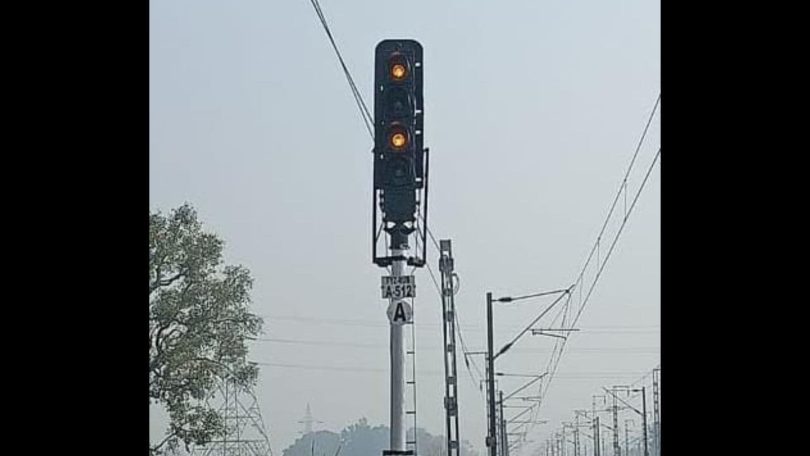[ad_1]
Last Updated: January 05, 2023, 16:06 IST

Automatic Block Signalling is a cost-effective solution in order to increase line capacity to run more trains on existing high-density routes of Indian Railways. (News18)
According to the Railway Ministry, up to December 31, 2022, ABS has been provided on 3,706 route km (rkm) while a total of 2,888 stations have been provided with electronic interlocking
The Indian Railways has been taking several steps to enhance safety and among these were the implementation of automatic block signalling (ABS) and electronic interlocking.
According to the Railway Ministry, up to December 31, 2022, ABS has been provided on 3,706 route km (rkm) while a total of 2,888 stations have been provided with electronic interlocking covering 45.5 per cent of the Indian Railways.
According to the ministry’s statement released on Thursday, ABS is a cost-effective solution in order to increase line capacity to run more trains on existing high-density routes of Indian Railways. During this financial year, the system has been commissioned on 268 rkm.
“Indian Railways has been rolling out ABS on a mission mode. ABS has been commissioned on 268 rkm during 2022-23… With implementation of automatic signalling, increase in capacity will accrue, resulting in more train services becoming possible,” the ministry said.
Total auto signal commissioned in North Central Railway is 139.42 rkm during the current financial year. With the commissioning of automatic signalling system in Sath Naraini-Rundhi-Faizullapur station section of Prayagraj Division, 762-km-long Ghaziabad-Pt Deen Dayal Upadhyay section has been fully automated and has also become the longest automatic block signalling section of the Indian Railways.
What is an automatic signalling system?
There are two major types of signalling systems used in Railways. First is the absolute block system in which there is one train in between two stations at a time and the second train is permitted to enter only when the first train clears the block section. The portion between two stations is called a block section.
प्रयागराज मंडल के सतनरैनी-रसूलाबाद-फैजुल्लापुर सेक्शन में ऑटोमैटिक सिग्नलिंग प्रणाली शुरू होने के बाद 762 KM लंबा गाजियाबाद-पं. दीन दयाल उपाध्याय सेक्शन पूर्णतया स्वचालित हो गया है और इसके साथ ही यह भारतीय रेल का सबसे लंबा ऑटोमैटिक ब्लॉक सिग्नलिंग सेक्शन भी बन गया है। pic.twitter.com/CwkA9bIVxI— Ministry of Railways (@RailMinIndia) January 3, 2023
An advancement of this system is provision of Intermediate Block Station (IBS), wherein the section is split into two sub-sections by providing an intermediate signal and thus two trains can be accommodated between two stations.
The second type of signalling system is automatic signalling. In this system, signals are provided continuously after around 1-1.5 km and there can be one train in between two signals. Thus, practically there may be many trains in between two stations, depending upon the number of automatic signals provided.
Automatic signalling increases the line capacity to a great extent as more trains can be run within the same route using the existing track. It is used in busy sections of Indian Railways.
Electronic Interlocking
Railway signalling system plays a vital role in the movement of trains. Electronic interlocking is being adopted on a large scale to derive benefits of digital technologies in train operation and to enhance safety.
Electronic interlocking systems have been provided at 347 stations during 2022-23. “So far 2,888 stations have been provided with Electronic Interlocking up to December 31, 2022, covering 45.5 per cent of IR,” the ministry added.
Railway signalling has come a long way from un-interlocked, mechanical and electro-mechanical interlocking. With the advent of electronics and computers, there have been revolutionary changes in the field of railway signalling.
Electronic interlocking systems have several advantages over electro-mechanical or conventional panel interlocking, such as reduced space requirements, self-diagnostic features, safety and reliability.
Read all the Latest India News here
[ad_2]
Source link









